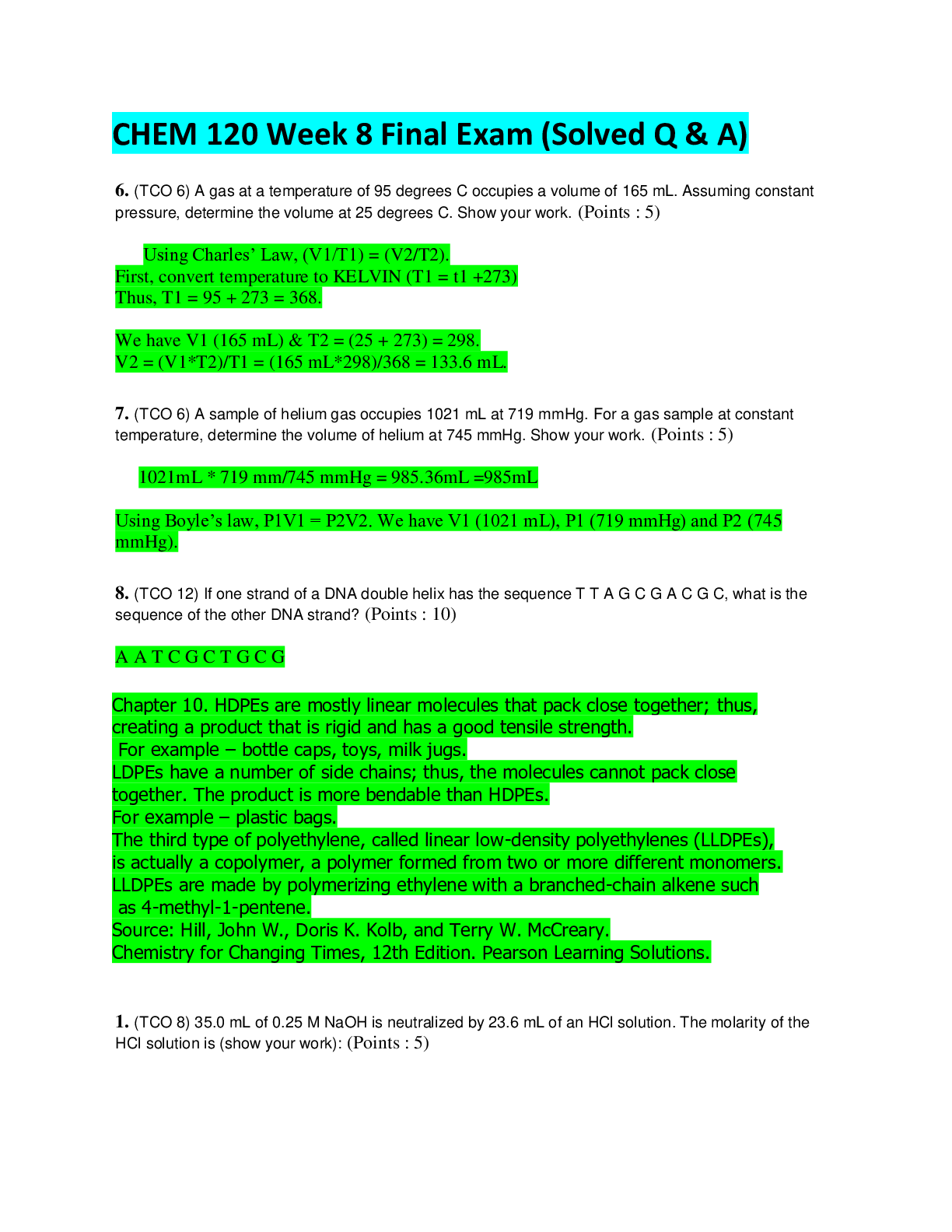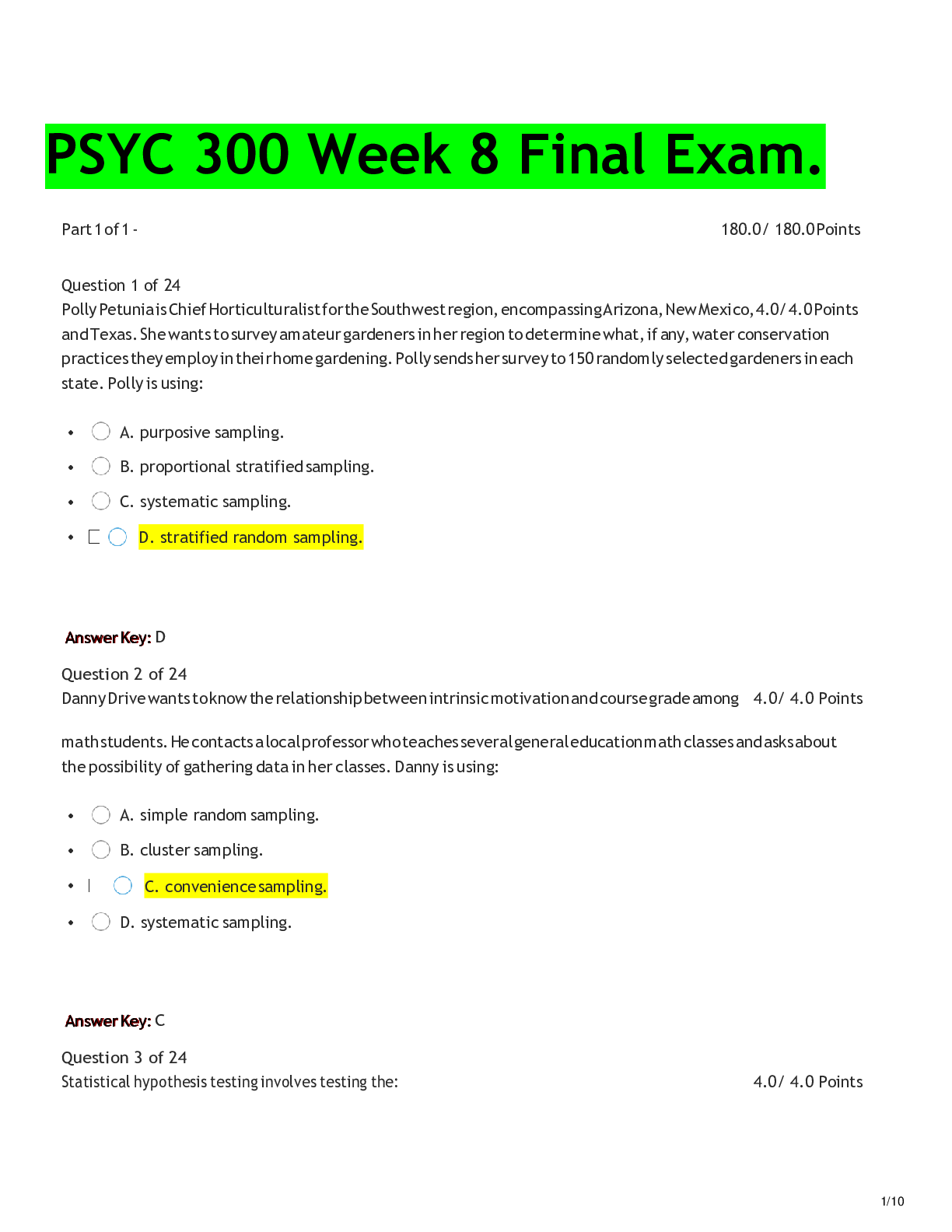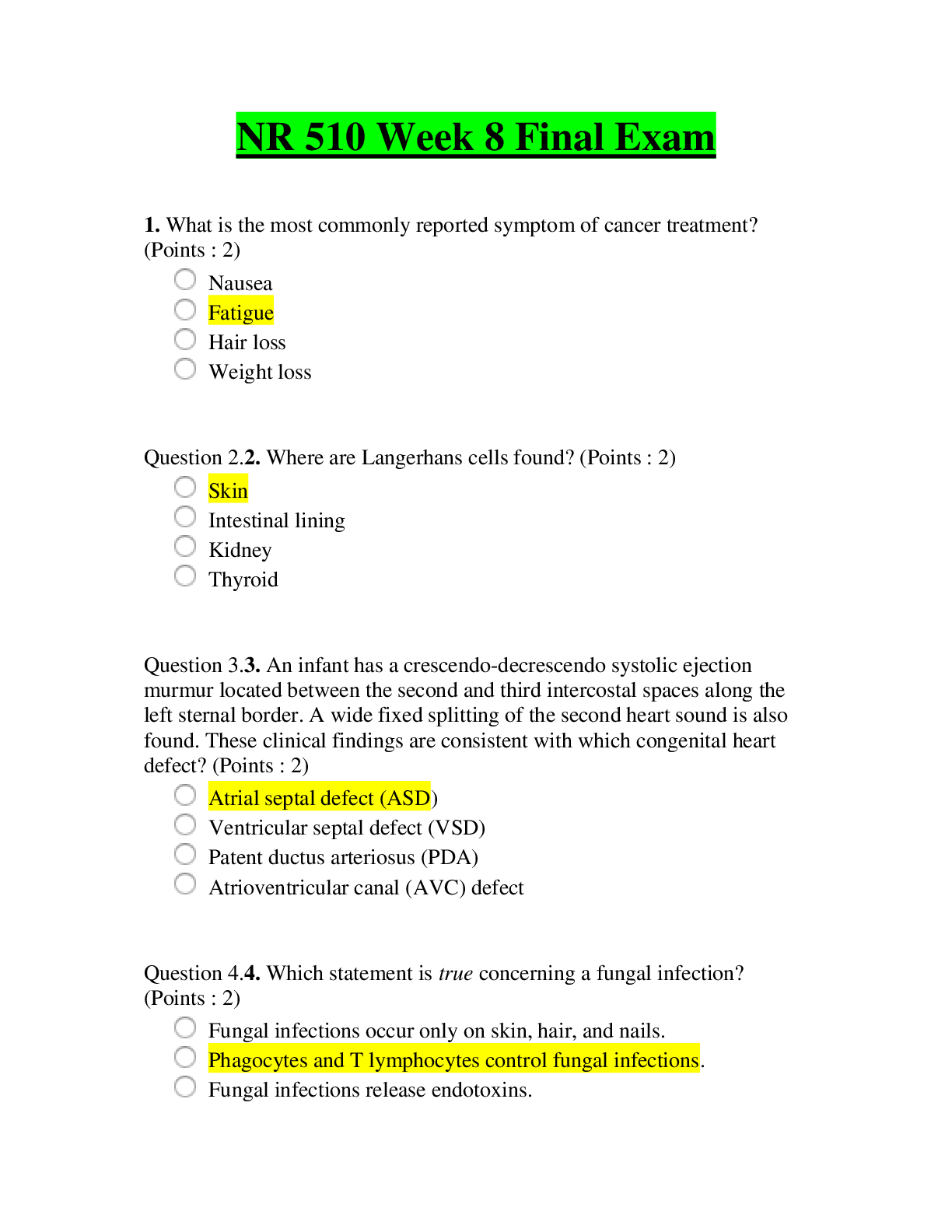Biology > QUESTIONS & ANSWERS > NR 507 Week 8 Final questi0ns and answers (All)
NR 507 Week 8 Final questi0ns and answers
Document Content and Description Below
NR 507 Week 8 Final questi0ns and answers endometrial cycle The 28 days of the menstrual cycle as they apply to the events in the uterus. The endometrial cycle has four subphases: menstruation, t... he proliferative phase, and the secretory phase, and the ischemic phase . proliferative phase The second phase of the uterine (endometrial) cycle, during which the endometrium (shed off during menstration is rebuilt). This phase of the cycle is under the control of estrogen, secreted from the follicle developing in the ovary during this time period. The proliferative phase typically lasts from day 6 to day 14 of the menstrual cycle. 00:39 01:08 secretory phase The third phase of the uterin (endometrial) cycle, during which the rebuilt endometrium is enhanced with glycogen and lipid stores. The secretory phase is primarily under the controll of progestone and estrogen (secreted from the copus luteum during this time period), adn typically lasts from day 15 to day 28 of the menstrual cycle. ischemic phase Approximately 3 days before menstruation to onset of menstruation. due to the decreased production of estrogen or progesterone and the endometrium becomes blood starved menstrual cycle Cycle during which an egg develops and is released from an ovary and the uterus is prepared to receive a fertilized egg. Ovulation The process of releasing a mature ovum into the fallopian tube each month uterine prolapse the condition in which the uterus slides from its normal position in the pelvic cavity and sags into the vagina risk factors for uterine prolapse menopause, pregnancy, coughing, constipation, obesity, pelvic floor trauma, vaginal birth, hysterectomy, connective tissue disorders, spina bifida uterine prolapse treatment - kegel exercises - estrogen therapy - maintaining a healthy bmi, preventing constipation, treating chronic cough - pessary - surgical option s last resort polycystic ovarian syndrome defined as two of the following three features - irregular ovulation -elevated adrogens (testosterone) - and the appearance of polycystic ovaries on ultrasound differentials for pcos - thyroid dysfunction - hyperprolactinemia - congenital adrenal hyperplasia Characteristics associated with PCOS -metabolic dysfunction - dyslipidemia - insulin resistance - obesity [Show More]
Last updated: 2 years ago
Preview 1 out of 11 pages

Buy this document to get the full access instantly
Instant Download Access after purchase
Buy NowInstant download
We Accept:

Reviews( 0 )
$10.00
Can't find what you want? Try our AI powered Search
Document information
Connected school, study & course
About the document
Uploaded On
Aug 14, 2022
Number of pages
11
Written in
Additional information
This document has been written for:
Uploaded
Aug 14, 2022
Downloads
0
Views
62








.png)

.png)















